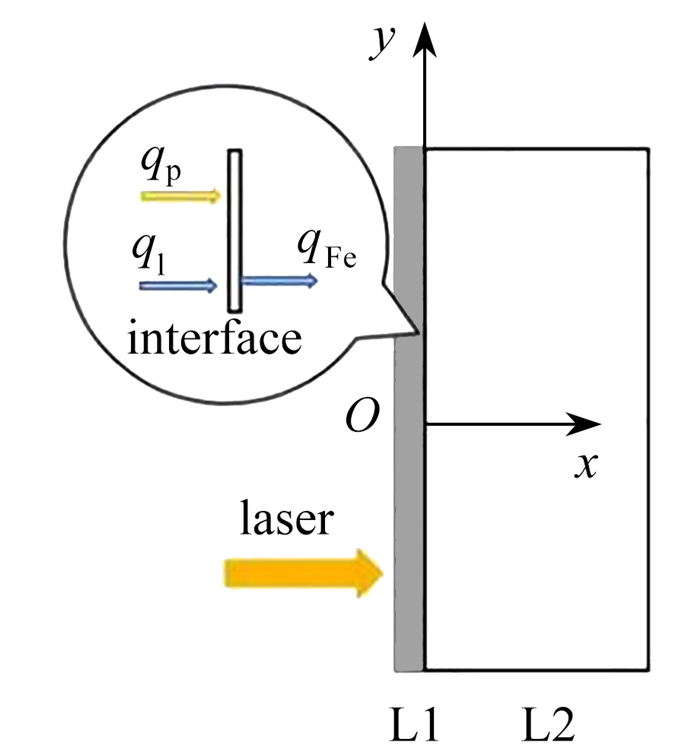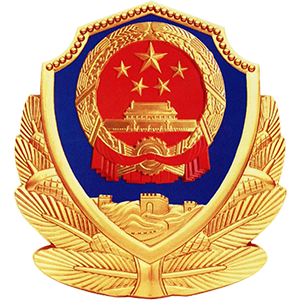| [1] |
BEDAIR S M, SMITH H P. Atomically clean surfaces by pulsed laser bombardment[J]. Journal of Applied Physics, 1969, 40(12): 4776-4781. doi: 10.1063/1.1657288
|
| [2] |
叶少伟. 脉冲激光干式清洗轮胎模具的机理与实验研究[D]. 厦门: 厦门理工学院, 2020.YE Shaowei. The mechanism and experimental research of pulse laser dry cleaning tire mold[D]. Xiamen: Xiamen University of Technology, 2020. (in Chinese)
|
| [3] |
秦哲, 高谦, 王斌, 等. 飞机蒙皮纳秒脉冲激光除漆工艺与机理研究[J]. 表面技术, 2022, 51(7): 370-376.QIN Zhe, GAO Qian, WANG Bin, et al. Technology and mechanism of nanosecond pulse laser paint removal of aircraft skin[J]. Surface Technology, 2022, 51(7): 370-376. (in Chinese)
|
| [4] |
齐扬. 云冈石窟砂岩文物表面污物激光清除机理及应用研究[D]. 武汉: 中国地质大学, 2015.QI Yang. Study of mechanisms of laser cleaning of sandstone surface contaminants in Yungang grottoes and its applications[D]. Wuhan: China University of Geosciences, 2015. (in Chinese)
|
| [5] |
王泽敏, 曾晓雁, 黄维玲. 脉冲激光除漆机理及工艺参数的研究[J]. 材料保护, 2000, 33(4): 21-22.WANG Zemin, ZENG Xiaoyan, HUANG Weiling. Parameters and mechanisms of paintcoat laser cleaning[J]. Materiais Protection, 2000, 33(4): 21-22. (in Chinese)
|
| [6] |
邹万芳. 激光干式除漆作用机制的分析[J]. 航空精密制造技术, 2010, 46(6): 60-61.ZOU Wanfang. Analysing mechanics of dry laser paint removal[J]. Aviation Precision Manufacturing Technology, 2010, 46(6): 60-61. (in Chinese)
|
| [7] |
KELLEY J D, HOVIS F E. A thermal detachment mechanism for particle removal from surfaces by pulsed laser irradiation[J]. Microelectronic Engineering, 1993, 20(1/2): 159-170.
|
| [8] |
LU Y F, ZHENG Y W, SONG W D. An energy approach to the modelling of particle removal by pulsed laser irradiation[J]. Applied Physics A: Materials Science & Processing, 1999, 68(5): 569-572.
|
| [9] |
LU Y F, SONG W D, LOW T S. Laser cleaning of micro-particles from a solid surface: theory and applications[J]. Materials Chemistry and Physics, 1998, 54(1/3): 181-185.
|
| [10] |
邹万芳, 尹真. 短脉宽激光除漆理论清洗模型的建立[J]. 赣南师范学院学报, 2008, 29(6): 27-30.ZOU Wanfang, YIN Zhen. The theoretical cleaning model of paint removal by short pulse laser[J]. Journal of Gannan Normal University, 2008, 29(6): 27-30. (in Chinese)
|
| [11] |
田彬. 干式激光清洗的理论模型与实验研究[D]. 天津: 南开大学, 2008.TIAN Bin. Theoretical model and experimental study of dry laser cleaning[D]. Tianjin: Nankai University, 2008. (in Chinese)
|
| [12] |
宋峰, 邹万芳, 田彬, 等. 一维热应力模型在调Q短脉冲激光除漆中的应用[J]. 中国激光, 2007, 34(11): 1577-1581.SONG Feng, ZOU Wanfang, TIAN Bin, et al. Model of one-dimensional thermal stress applied in paint removal by Q-switched short pulse laser[J]. Chinese Journal of Lasers, 2007, 34(11): 1577-1581. (in Chinese)
|
| [13] |
ZOU W F, XIE Y M, XIAO X, et al. Application of thermal stress model to paint removal by Q-switched Nd: YAG laser[J]. Chinese Physics B, 2014, 23(7): 074205. doi: 10.1088/1674-1056/23/7/074205
|
| [14] |
LI X K, ZHANG Q H, ZHOU X Z, et al. The influence of nanosecond laser pulse energy density for paint removal[J]. Optik, 2018, 156: 841-846. doi: 10.1016/j.ijleo.2017.11.010
|
| [15] |
LU Y, YANG L J, WANG M L, et al. Simulation of nanosecond laser cleaning the paint based on the thermal stress[J]. Optik, 2021, 227: 165589. doi: 10.1016/j.ijleo.2020.165589
|
| [16] |
张鹏, 王如竹. 超流氦传热[M]. 北京: 科学出版社, 2009.ZHANG Peng, WANG Ruzhu. Superfluid Helium Heat Transfer[M]. Beijing: Science Press, 2009. (in Chinese)
|
| [17] |
赵颐, 田晓耕. 基于L-S广义热弹性理论YSZ在超短脉冲下的热力响应[J]. 应用数学和力学, 2023, 44(7): 784-796. doi: 10.21656/1000-0887.430134ZHAO Yi, TIAN Xiaogeng. Thermomechanical responses of YSZ under ultrashort thermal shock based on the L-S generalized thermoelastic theory[J]. Applied Mathematics and Mechanics, 2023, 44(7): 784-796. (in Chinese) doi: 10.21656/1000-0887.430134
|
| [18] |
TZOU D Y. Macro- to Microscale Heat Transfer: the Lagging Behavior[M]. 2nd ed. United Kingdom: John Wiley & Sons Ltd, 2015.
|
| [19] |
胡汉平, 董艺. 短脉冲激光加热模型的遴选原则[J]. 强激光与粒子束, 2006, 18(10): 1593-1596.HU Hanping, DONG Yi. Model selection criterion for short pulse laser heating[J]. High Power Laser and Particle Beams, 2006, 18(10): 1593-1596. (in Chinese)
|
| [20] |
胡汉平. 热传导理论[M]. 合肥: 中国科学技术大学出版社, 2010.HU Hanping. Heat Conduction Theory[M]. Hefei: University of Science and Technology of China Press, 2010. (in Chinese)
|
| [21] |
TAM A C, LEUNG W P, ZAPKA W, et al. Laser-cleaning techniques for removal of surface particulates[J]. Journal of Applied Physics, 1992, 71(7): 3515-3523. doi: 10.1063/1.350906
|
| [22] |
法西罗夫斯基R A, 凯斯特尔曼V N. 聚合物的粘接作用[M]. 王洪祚, 译. 北京: 化学工业出版社, 2004.VESELOVSKY R A, KESTTELMAN V N. Adhesion of Polymers[M]. WANG Hongzuo, transl. Beijing: Chemical Industry Press, 2004. (in Chinese)
|
| [23] |
YANG H, LIU H X, GAO R X, et al. Numerical simulation of paint stripping on CFRP by pulsed laser[J]. Optics & Laser Technology, 2022, 145: 107450.
|
| [24] |
WANG P, ZHANG Z, HAO B, et al. Investigation on heat transfer and ablation mechanism of CFRP by different laser scanning directions[J]. Composites Part B: Engineering, 2023, 262: 110827. doi: 10.1016/j.compositesb.2023.110827
|
| [25] |
赵安安, 张鸿帅, 燕国强, 等. 铝合金化铣保护胶激光刻型热应力耦合分析[J]. 激光技术, 2023, 47(3): 419-424.ZHAO An'an, ZHANG Hongshuai, YAN Guoqiang, et al. Thermal stress coupling analysis on laser engraving of aluminum alloys with protective coatings for chemical milling[J]. Laser Technology, 2023, 47(3): 419-424. (in Chinese)
|





 下载:
下载:








 渝公网安备50010802005915号
渝公网安备50010802005915号